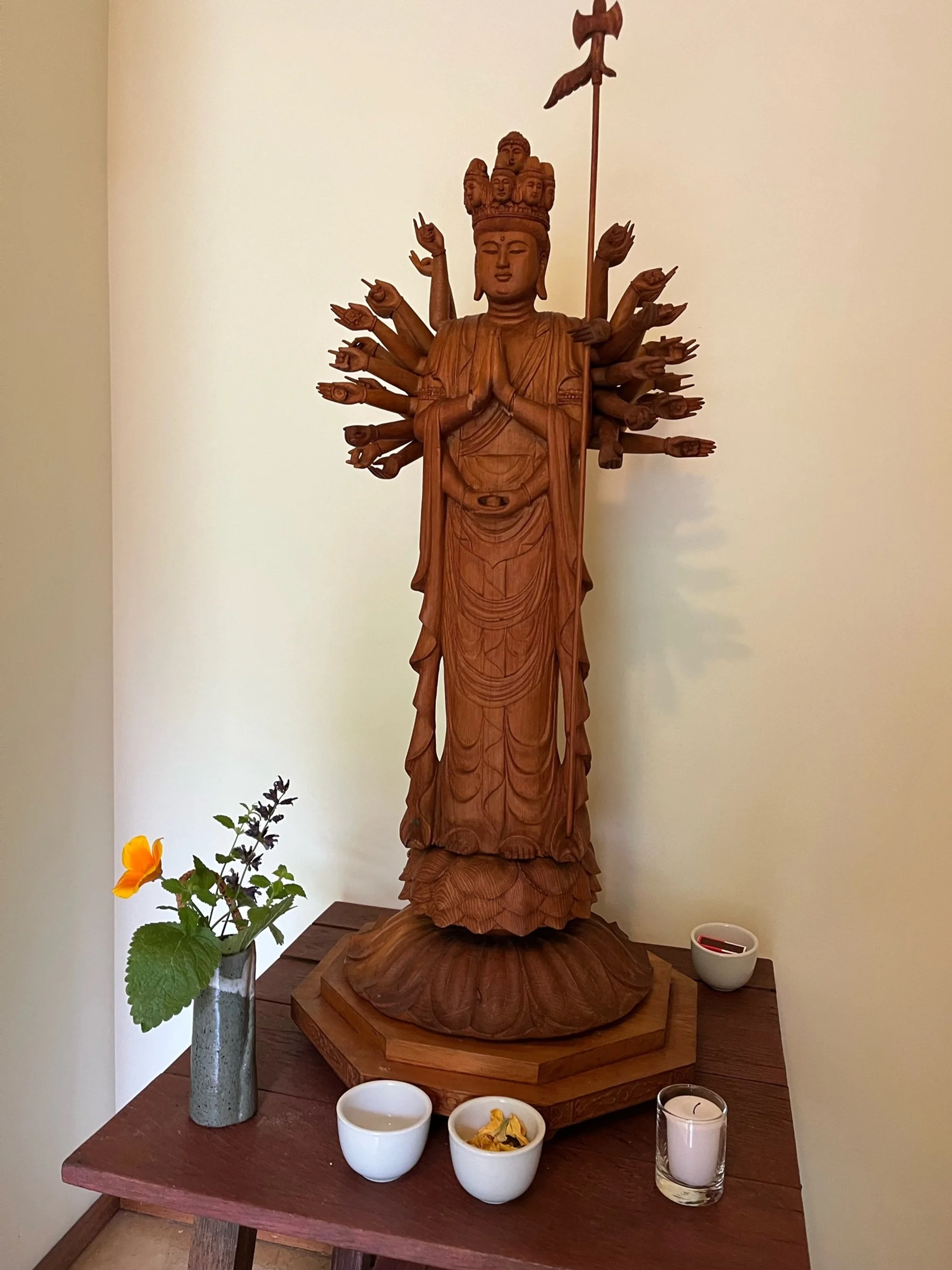Zen Terms
Zen Practice
Zen—meditative concentration. From Sanskrit dhjana, Chinese Chan, Japanese Zen
Zendo—meditation hall
Zazen—sitting meditation
Kinhin—walking meditation, usually done between periods of zazen.
Zafu—round cushion used for zazen
Zabuton—rectangular sitting mat used for zazen
Samu—work practice, done mostly in silence with mindfulness
Dharma talk—talk by a priest or lay teacher about Buddhist teachings, sometimes called teisho
Dokusan—a private interview between student and Zen teacher, literally “to go alone”
Practice discussion—a private interview between a student and a senior sangha leader, ordained or lay
Oryoki—set of three bowls, utensils and cloths for formal Zen meals
Zen Training Positions
Tanto—head of practice, supervises overall practice and training
Jisha—teacher’s attendant
Jiko—priest’s attendant
Doshi—priest performing a service
Ino—supervises the zendo, trains doan-ryo
Doan-ryo—group that performs following functions:
Kokyo—chant leader
Doan—rings bells
Tenken—keeps time
Chiden—takes care of alter, cleaning, arranging flowers
Soku—head of serving crew for formal meals or tea
Shika—temple-keeper, keeps supplies in order
Work leader—organizes work crews for work practice
Other Zen Terms
Practice period—an intensive period of Zen practice 1-3 months long. At Mountain Rain we have a 6-7 week practice period every fall. “Ango” refers to a formal 3-month practice period at a monastery.
Sesshin—an intensive Zen retreat, literally “touching the heart/mind”
Dharma name—a Buddhist name, usually consisting of one or two pairs of Chinese/Japanese characters, received from a teacher in the jukai ceremony.
Jukai—literally “receiving the precepts”, a ceremony in which one joins a Buddhist lineage receives, a dharma name, and a rakusu. Sometimes called lay ordination.
Bodhisattva Precepts—a set of sixteen guidelines for moral/ethical conduct in daily life, derived from the rules that governed the community of monks and nuns in the time of the Buddha. This shorter version is taken by both lay and ordained practitioners in our tradition.
Fusatsu—a service of chanting the bodhisattva precepts monthly on the full moon.
Rakusu—symbolic of the Buddha’s robe, a bib-like small version of a priest’s robe, worn by lay practitioners who have done the jukai ceremony, and by priests for informal occasions. The person’s dharma name is written on the back. In our tradition we sew the rakusu and priest’s robe by hand.
Okesa—priest’s outer robe, a rectangle sewn most often of seven panels.
Soto Zen—school of Zen originating in China, and founded in Japan in the 13th century by Dogen Zenji. Emphasizes the practice of shikantaza.
Shikantaza—the practice of “just sitting” with a spacious awareness allowing sensations, feelings and thoughts arise and pass away
Rinzai Zen—school of Zen originating in China and founded in Japan in the 13th century by Esai Zenji. Emphasizes koan practice.
Koan—a Zen teaching story focussing on a question or phrase used as the object of mediation to induce direct insight into the true nature of existence.




